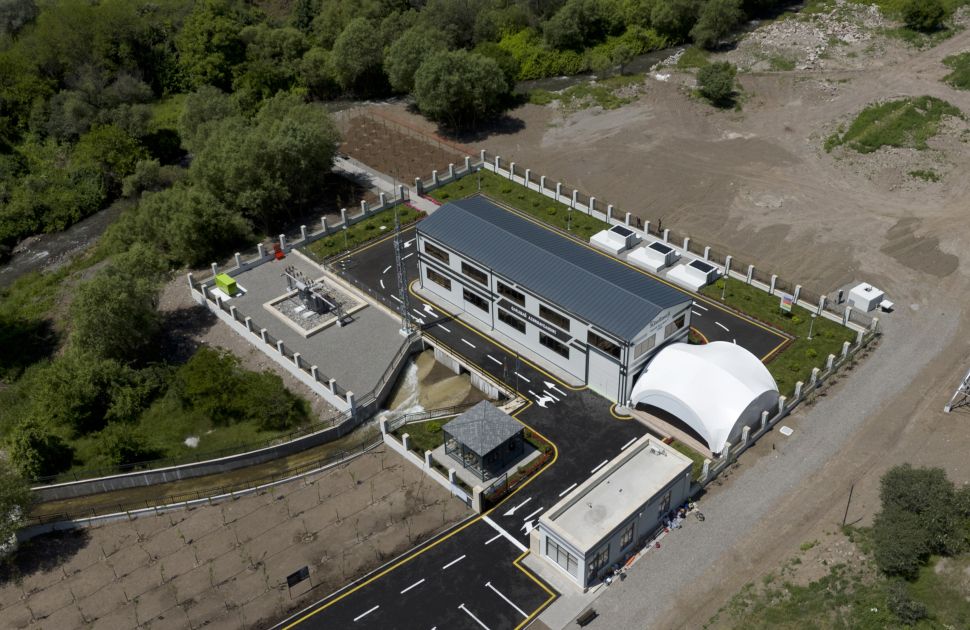Hydropower takes lead in sustainable transformation of Garabagh

Following the great victory that restored Azerbaijan’s sovereignty over Garabagh and surrounding regions, the country is now vigorously engaged in an ambitious reconstruction process under the Great Return Program. This large-scale initiative, championed by President Ilham Aliyev, is not only restoring communities but also laying the foundation for sustainable economic growth by building new villages and cities from the ground up. Modern trade hubs, logistics centers, and special economic zones are emerging, signaling a transformative era for these liberated territories.
Amid this dynamic rebuilding process, a parallel and equally vital effort is underway: the systematic development of hydroelectric power plants harnessing the abundant rivers, springs, and meltwaters originating in the Lesser Caucasus mountains. These projects are set to provide a steady supply of clean, green energy, underpinning Azerbaijan’s commitment to sustainable development while powering the new economic heartbeat of Garabagh and Eastern Zangazur.
Unlocking Azerbaijan’s hydro energy potential
The Garabagh region stands out as particularly rich in hydroelectric resources, thanks to its favorable geographic and hydrological characteristics. President Ilham Aliyev recently attended the inauguration ceremony of the Ashagi Malibeyli and Mirik hydroelectric power plants in the Lachin district, marking a milestone in the region’s energy development.
With 32 hydroelectric plants already operational across Garabagh and Eastern Zangazur, and six more poised for commissioning, Azerbaijan’s hydroelectric capacity now reaches 38 plants with a combined installed capacity of 307 MW. These facilities tap into rivers such as the Zabukh, a right-bank tributary of the Hakari River, utilizing the natural meltwaters and springs of the Lesser Caucasus to generate sustainable power.
The environmental benefits are significant: these hydro plants are projected to save up to 200 million cubic meters of natural gas annually, preventing the emission of approximately 400,000 tons of carbon dioxide. This transition to green energy is a vital contribution to Azerbaijan’s climate commitments and a clear demonstration of the country’s energy diversification strategy.
Complementing the expansion of hydroelectric capacity, President Ilham Aliyev also inaugurated the Lachin Electric Network Digital Control Center, a state-of-the-art facility designed to optimize electricity distribution and enhance grid reliability in the region.
This innovative center is equipped with advanced transformers and distribution units, supported by dual-circuit power transmission lines stretching 4.8 kilometers from the Lachin substation. It integrates a sophisticated SCADA (Supervisory Control and Data Acquisition) system, allowing for real-time digital monitoring, protection, and management of the electrical network.
The Digital Control Center not only reduces energy transmission losses and operational costs but also ensures uninterrupted power supply by dynamically managing electricity flows and integrating renewable energy sources such as hydroelectric power. Its online notification system improves transparency by informing consumers of planned outages, while remote control capabilities eliminate the need for constant on-site staff, reflecting a leap in automation.
Advantages of hydro green energy for Azerbaijan’s sustainable future
Hydroelectric power offers unique advantages within Azerbaijan’s energy mix. Unlike more variable renewables like wind or solar, hydro plants provide a reliable, controllable source of energy critical for grid stability. Their renewable nature and ability to quickly respond to demand changes make them ideal partners for digital control systems, ensuring a continuous power supply.
Furthermore, hydroelectricity helps reduce Azerbaijan’s dependence on fossil fuels, particularly natural gas, which has historically dominated the national energy sector. By saving natural gas and cutting emissions, hydro plants contribute both to economic efficiency and environmental protection.
The investment in hydroelectric infrastructure is particularly significant for Garabagh, a region undergoing reconstruction and economic revitalization after liberation. These green energy projects support local employment and lay the groundwork for sustainable development, reinforcing the broader goals of the Great Return Program under President Aliyev’s leadership.
Integrating these modern hydro plants into the national grid exemplifies Azerbaijan’s strategic approach to energy and regional development, combining environmental stewardship with technological innovation.
Azerbaijan’s expansion of hydroelectric power plants in Garabagh and Eastern Zangazur, alongside the deployment of advanced digital control centers, highlights the country’s determination to build a resilient and sustainable energy future. Under the guidance of President Ilham Aliyev, these efforts not only reduce carbon emissions and natural gas consumption but also foster regional economic growth and modernize the nation’s power infrastructure.
As Azerbaijan continues to harness its natural resources and invest in smart grid technologies, it sets a compelling example of balancing rapid development with environmental responsibility—an increasingly vital model in the South Caucasus and beyond.
Here we are to serve you with news right now. It does not cost much, but worth your attention.
Choose to support open, independent, quality journalism and subscribe on a monthly basis.
By subscribing to our online newspaper, you can have full digital access to all news, analysis, and much more.
You can also follow AzerNEWS on Twitter @AzerNewsAz or Facebook @AzerNewsNewspaper
Thank you!

